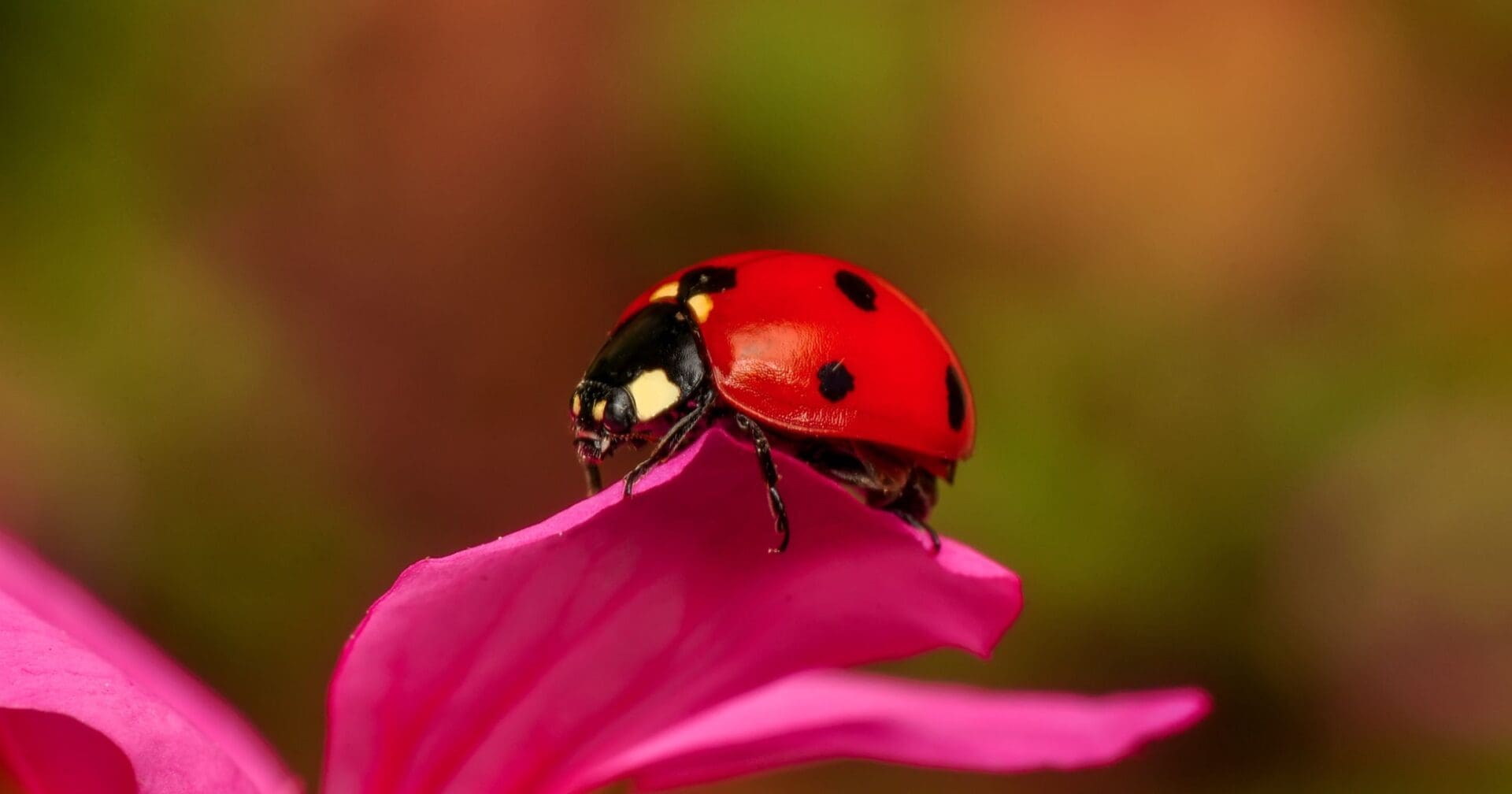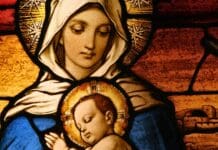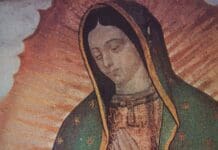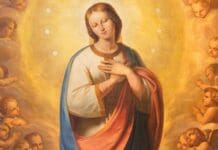Spotting a colorful ladybug is a sure sign that the cold of winter is gone and the warmth of summer has been ushered in. Farmers and gardeners alike love the insect for keeping away pests that eat their plants. Having one land on you even means good luck in popular folklore. But have you ever wondered just how the tiny beetle got its name? It might surprise you that the ladybug actually takes its name after the Blessed Virgin Mary.
Humanity’s agricultural endeavors have long been intertwined symbiotically with insects and other creatures that protect crops. While today ladybugs are often used as organic pest control for home gardeners and farmers, hundreds of year ago before the advent of pesticides they were often depended upon to safeguard the harvests.
“Locusts came, grasshoppers without number. They devoured every plant in the land; they devoured the crops of their fields.” – Psalms 105:34-35
As tradition goes, during the Middle Ages a plague of small insects, most likely aphids, attacked the crops and threatened Europe with starvation. The people turned to praying for the intercession of the Virgin Mary. Their prayers were answered when a cloud of tiny orange-red insects speckled with black arrived and ate the offending pests. In gratitude, the people gave them the honorary name “Our Lady’s Beetle.” Over time, this was shortened to the “ladybeetle” or the “ladybird,” and in the United States became what we know today as the ladybug.
Another tradition finds the ladybugs name in its bright red shell that bears a striking resemblance to the red cloak the Virgin Mary is often wearing in religious paintings from the time. In Europe, the most common ladybug is the seven-spotted variety. These seven spots were seen to symbolize both the Seven Joys and Seven Sorrows of Mary.
Its likely that both traditions somewhat contributed to giving the ladybug its name. However, what is definitive is that almost all European countries during the Middle Ages believed them to be a gift from God. Of the variety of names given to the beetle, a majority of them refer to Our Lady.
• Ye Mariam Tinziza – “Mary’s Beetle”- Amharic (West Ethiopia)
• Arca de la Mare de Deu – “Mother of God’s Ark” – Catalan
• Gallinetta de la Mare de Deu – “Mother of God’s Chicken”” – Catalan
• Bubamara … “Mary’s Beetle” – Croatian
• Mariehøne … “Mary’s Hen” – Danish
• Onzer-lieve-vrouwe Beestje – “Our Dear Lady’s Little Creature” – Dutch
• Bete de la Vierge – “The Virgin’s Creature” – French
• Frauenkäferlein – “Our Lady’s Little Beetle” – German (Bohemia)
• Scarpa de la Madona – “The Madonna’s Shoe” – Italian (Turin)
• Kafsch Dus – “God’s Beetle” – Persian (Iran)
• Boul-popei – “The Pope’s Ox” – Romanian
• Jungfru Maria Nyckelpiga – “Virgin Mary’s Key Maid” – Swedish
Not convinced enough? According to the Oxford Dictionary, the first mention of the “ladybird” comes from a 1674 glossary of southern English words. The author of the glossary says “the little spotted beetle commonly called the Lady cow, or Lady-bird” is referred to in slang as a “bishop.” There is no doubting the strong relationship the ladybug had with medieval Europe’s religiosity.
Photo credit: Darkdiamond67 / Shutterstock.com


















so cool ,iv always wanted to know were the name came from
[…] To Change the Church . . . Or Replace It? With Ross Douthat – John Zmirak Ph.D., The Stream Did You Know? Ladybugs Are Named for the Virgin Mary – Billy Ryan, uCatholic What Happened When I Quit Social Media – Caroline Brock, […]
I am a Roman Catholic Christian and I very much enjoy all of the information I am learning at your website. Thanks so much for taking the time to share so much information with everyone.
Wonderful article! In German, Marienkäfer (Mary’s beetle) is the most common name for the ladybug. Frauenkäfer (Our Lady’s beetle) or Muttergotteskäfer (Mother of God’s beetle) are also variants.
Thank you
I love this
Thank you so much for the article/informations; this is so beautiful! I will share it with our parishioners!
[…] Did you know Lady birds are named for the virgin Mary […]
[…] the rumination on ladybugs, the speaker intertwines 2 stories, one from the Christian tradition in which the Virgin Mary sent ladybugs to medieval Europe to save the crops from mealybugs, and another, from the Jewish, in which Queen Esther saved the Jewish people from destruction in […]
my mother, who has since passed, and I used to attend the Saturday vigil mass together when I was a young girl. I was the third of 8 and mom chose to attend mass on Saturday because she was home taking care of a very small child and preparing Sunday dinner, I would go with her. Even after I got married, I would go pick up my mom for mass on Saturday night, I moved away from my hometown and for the past several years I have been going to mass on Sundays, lately I started going on Saturday night again. I often think about those times when mom and I would go together. This Saturday after mass I stayed in my pew and was reading the liturgy of the word and looked down and saw a ladybug crawling next to me, I first thought of my mom because she loved lady bugs, Then I remembered the reference I had heard about with Mary. I looked it up this morning and found your website explaining it, my mother also had a strong devotion for the rosary and prayed it every day, I never got to ask her if she knew the story of how the ladybug’ got its name. I think perhaps she does now. Thank you for this article, very informative. It made me smile and think about Mother Mary and my lovely mom.
Absolutely beautiful thank you for sharing love ❤️ from Liverpool England 🏴 😊
In Polish it’s biedronka or Boża krówka (God’s cow).
Why do you have ads supporting trump on here? Do you not read the Bible? Trump is a philanderer, a rapist, a whoremonger, a liar, a thief and an agent of chaos. you could not pick a more sinful person and if you vote for him, you are complicit.